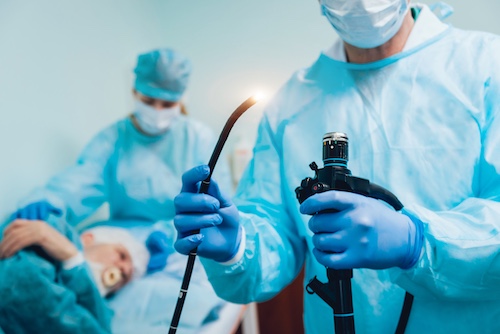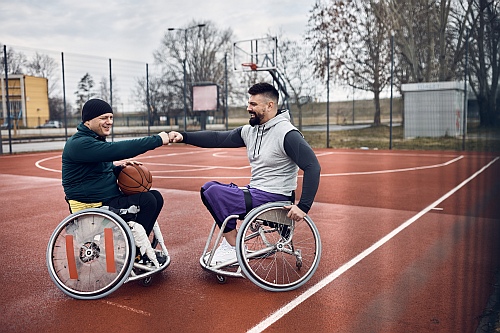Understanding Endoscopic Rhizotomy Recovery
Endoscopic rhizotomy is a minimally invasive spine surgery used to treat chronic back pain, neck pain, and facet joint arthritis by targeting the medial branch nerves that transmit pain signals. For patients suffering from long-term discomfort that has not responded to conservative care, this procedure offers a path to long-term relief. Recovery is typically faster than with more invasive surgery, but it still requires clear guidance and care.
In this blog, you’ll learn what to expect during each stage of endoscopic rhizotomy recovery and why consulting with an experienced Atlanta endoscopic rhizotomy specialist is important for achieving safe, lasting pain relief.
Immediate Post-Op: The First 24–72 Hours
The first 72 hours after an endoscopic rhizotomy are important for monitoring progress and preventing complications. Patients should expect some mild discomfort, but most return home the same day with minimal restrictions.
Outpatient Procedure with Local Anesthesia
Endoscopic rhizotomy is a minimally invasive outpatient procedure. Most patients receive local anesthesia and conscious sedation. There is no need for general anesthesia. This lowers risk and speeds up recovery. Because the procedure uses a small incision and direct endoscopic visualization, tissue damage is minimal.
Pain and Discomfort Levels
Patients may feel soreness at the incision site or in the lower back or neck, depending on the area treated. This is common after a minimally invasive endoscopic surgery. Pain is usually mild and managed with over-the-counter medication or short-term prescriptions. Most patients report immediate or gradual relief as the medial branch nerves stop transmitting pain signals.
Movement and Activity
Movement should be limited during the first 24 hours. Light walking is encouraged to support circulation and reduce stiffness. Avoid bending, twisting, or heavy lifting. These actions can stress the facet joints and slow healing. Patients should not drive until cleared by their provider.
Wound Care and Incision Management
Keep the incision site clean and dry. The small incision heals quickly when properly protected. Watch for signs of infection, such as redness or swelling. Most patients experience no complications due to the minimally invasive nature of endoscopic rhizotomy surgery.
Monitoring and Next Steps
Atlanta endoscopic rhizotomy specialists recommend follow-up within a few days to assess early healing. If patients notice increased pain, fever, or drainage from the incision, they should contact their provider. Early care supports long-term pain relief and avoids setbacks during recovery.
The First Week: Adjusting to Normal Activities
The first week after an endoscopic rhizotomy is focused on controlled movement and gradual return to basic daily routines.
Light Activity is Encouraged
Most patients can walk and perform simple tasks within a day or two. Light movement supports blood flow and reduces stiffness around the treated facet joints. Avoid staying in bed for long periods, but do not overexert. Movement should not cause increased pain.
Avoid Heavy Lifting and Twisting
Patients should avoid lifting heavy objects or twisting the spine. These actions can irritate the medial branch nerves and surrounding tissues. The goal is to allow the body to adjust after the endoscopic facet rhizotomy procedure without triggering pain signals.
Managing Pain and Inflammation
Some discomfort may continue as the nerves causing pain stop sending signals. Mild soreness is common. Ice packs and over-the-counter anti-inflammatory medications can help manage swelling. Pain relief will often improve each day as the area heals.
Monitoring the Incision Site
Check the small incision daily for signs of infection. The site should remain clean and dry. Most patients heal without complications due to the minimally invasive procedure and small incision. Avoid soaking the wound or applying creams unless directed by the provider.
Returning to Normal Routines
By the end of the first week, many patients can resume light normal activities. Sedentary jobs are often manageable, though physical therapy may begin depending on recovery speed. An Atlanta endoscopic rhizotomy specialist may recommend a personalized timeline based on your condition and response to the procedure.
Signs to Watch For
If back pain or neck pain increases, or if symptoms return after temporary relief, contact your provider. Some patients may require a follow-up evaluation or imaging to confirm progress. Early attention helps ensure maximum pain relief from the endoscopic rhizotomy recovery process.
Weeks 2–6: Building Strength and Mobility
Weeks two through six are focused on improving strength, restoring spinal mobility, and supporting long-term pain relief after endoscopic rhizotomy.
Gradual Return to Activity
Most patients return to routine tasks with fewer limitations. Walking, stretching, and low-impact movements are encouraged. Activity should remain controlled to avoid straining the facet joints or inflaming the medial branch nerves. Normal activities can resume as long as pain remains low and motion is smooth.
Start of Physical Therapy
Some patients may begin physical therapy during this stage. A licensed provider can guide exercises to strengthen supporting muscles and stabilize the spine. Therapy focuses on improving flexibility, reducing stiffness, and preventing future muscle spasms or joint stress.
Ongoing Pain Relief
Many patients experience continued or increased relief during this time. The medial branch nerves, which transmit pain signals from inflamed facet joints, remain inactive due to the ablative procedure. If pain returns, a medial branch block or follow-up imaging may help identify any remaining pain-related issues.
Monitoring Progress
Watch for improvements in daily function and spinal mobility. You should be able to move more freely with less discomfort. If heavy lifting or more physical tasks are part of your job or routine, consult your Atlanta endoscopic rhizotomy specialist before resuming them. The goal is to support long-term outcomes while avoiding setbacks.
Recognizing Delayed Healing
In some cases, healing may take longer. Patients with chronic pain from degenerative disc disease or multiple pain sources may need additional care. Temporary relief may occur before full improvement sets in. Continued pain should be reported early to assess the need for further treatment.
Long-Term Outlook: 3 Months and Beyond
The months following endoscopic rhizotomy focus on maintaining relief, restoring full function, and preventing chronic pain from returning.
Maximum Pain Relief
By three months, most patients reach maximum pain relief. The medial branch nerves treated during the endoscopic rhizotomy procedure no longer transmit pain signals from the affected facet joints. This allows greater movement with less discomfort. Many patients report improved quality of life and reduced need for pain medication.
Return to Full Activity
Patients who follow recovery instructions can often return to full activity. This includes exercise, work, and normal daily routines. Spine mobility improves as inflammation in the spinal joints decreases. Activities that were once painful, such as standing, walking, or sitting for long periods, become easier.
Long-Term Success and Durability
Endoscopic rhizotomy recovery often leads to long-term relief. In some cases, the treated nerves may slowly grow back, which can cause pain to return over time. If this happens, another radiofrequency ablation or endoscopic rhizotomy may be recommended. This is more common in patients with ongoing facet joint arthritis or degenerative disc disease.
When Additional Treatment Is Needed
Patients who experience only temporary relief may need further care. A medial branch block or facet joint injection can help diagnose new pain sources. An Atlanta endoscopic rhizotomy specialist can decide if repeat treatment or a different minimally invasive spine surgery is appropriate.
Supporting Long-Term Results
To protect long-term results, patients should avoid heavy lifting or repetitive strain. Staying active and maintaining a healthy weight helps reduce pressure on the spine. Physical therapy exercises may continue to strengthen back muscles and prevent future injury. Regular follow-ups support long-lasting relief from back pain and neck pain.
Ready to Restore Your Life After Endoscopic Rhizotomy?
Rely on the expertise of our team at Georgia Spine & Orthopaedics to guide you through every step of recovery. Whether you face mild soreness or chronic pain, our Atlanta endoscopic rhizotomy specialists ensure you receive attentive care and support tailored to your needs.
Contact us at 678-929-4494 for a free consultation today!








